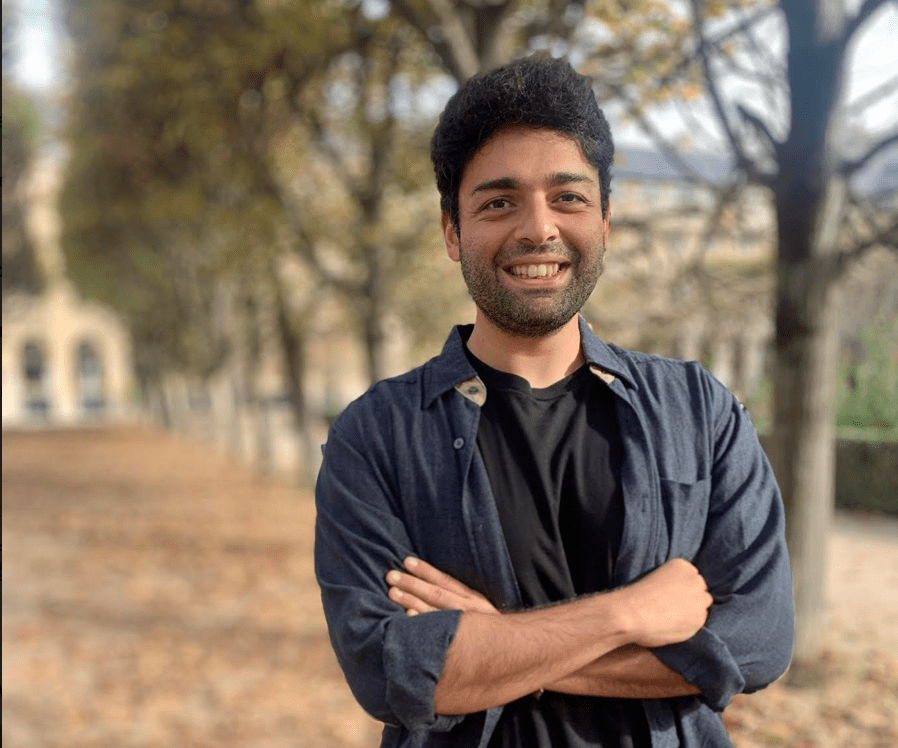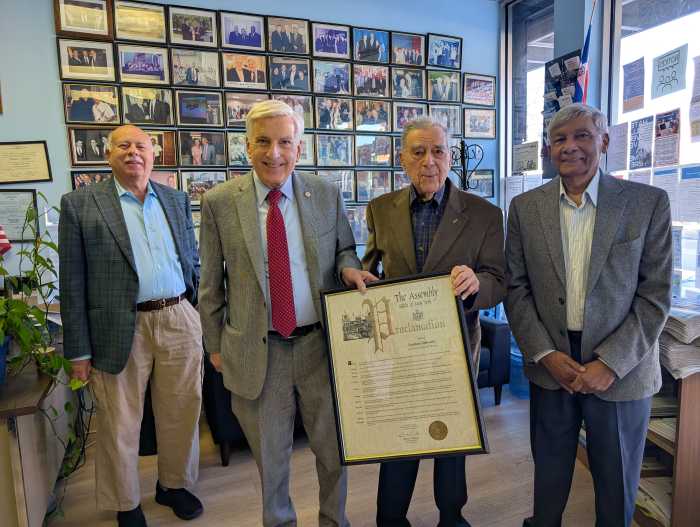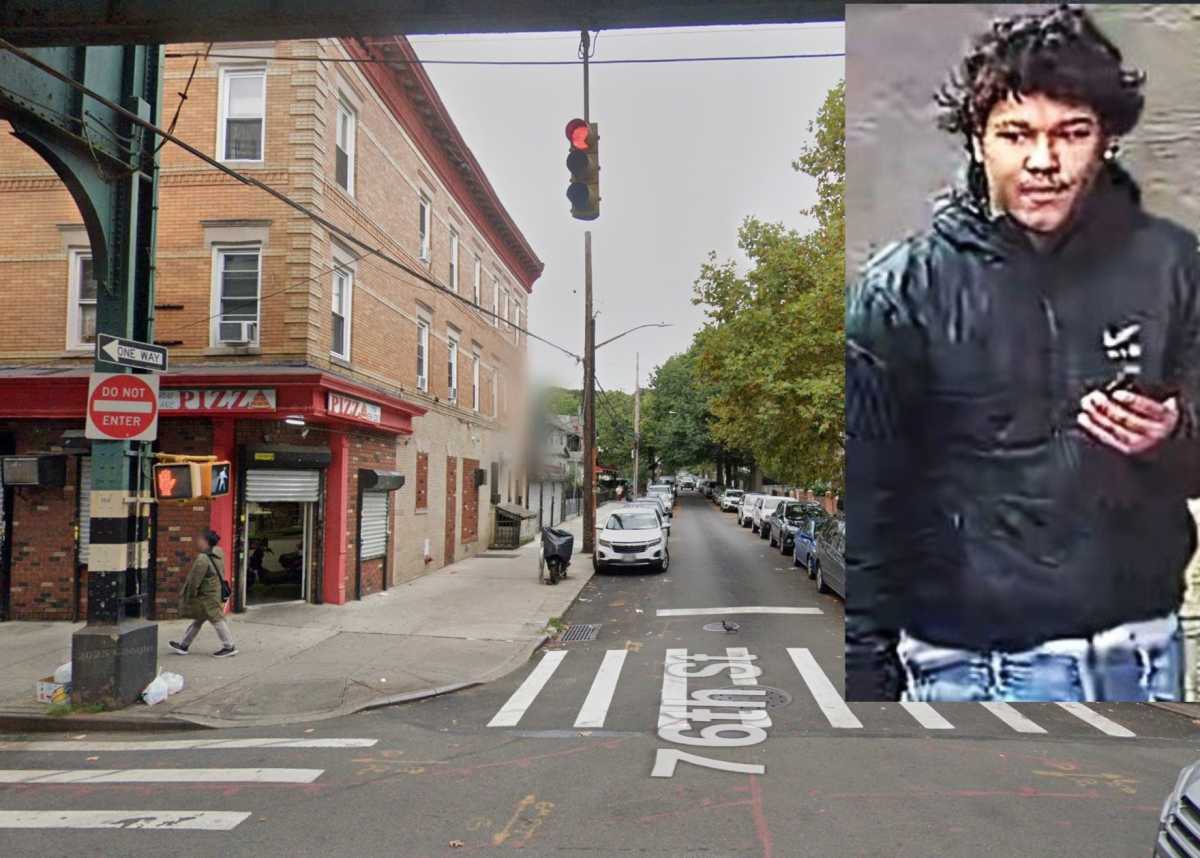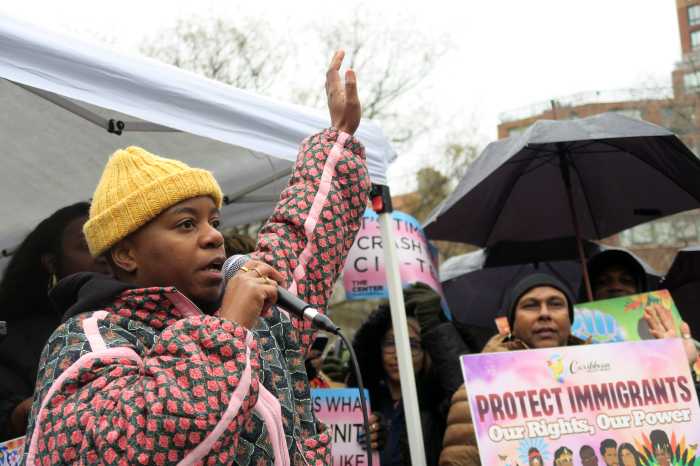During a typical week growing up in a multicultural household, Raj Tawney would have chicken curry on a Monday, arroz con habichuelas on a Tuesday and spaghetti and meatballs on a Wednesday.
Experiences like this fill up the pages of his coming of age memoir, “Colorful Palate: A flavorful Journey Through a Mixed American Experience.” Since its release last October, the book has garnered praise from a slew of prominent authors and will be taught to hundreds of college students in Queens this fall.
Tawney chronicles his search for his place in the world with a mixed racial identity that makes him feel like one-half of a person. His identity grapples are exacerbated by the push-and-pull relationship of his life in Queens, the Bronx and the suburbs of Long Island, where his family moved to plant roots.
“The book is a love letter to my family, and to people with mixed identity,” said Tawney in an interview with QNS. “I’ve kind of embraced the kind of messiness that is my identity. But it’s like a beautiful mess.”

His father arrived in Jackson Heights in 1976 from Mumbai, India, and his mother, who comes from a mixed Italian and Puerto Rican family, grew up in the south Bronx. After a successful first date and subsequent union, the couple moved to Elmhurst, where they had two sons.
Not long after, the family moved to Long Island for a better quality of life after witnessing violence in the area. But on weekends, they always returned to the boroughs, where their communities remained.
“In some ways, it was safer, for sure. But it wasn’t necessarily a better life. There was a lot of discomfort and subtle prejudice that I faced growing up,” shared Tawney. “We stuck out like a sore thumb.”
In his memoir, he writes about what he describes as an “invisible line of segregation,” particularly where he grew up in the predominantly white Commack, which neighbors the mostly Hispanic neighborhood of Brentwood.
In later chapters he describes feeling like an outsider among wealthier Indian families on the island who took on the “Keeping up with the Joneses” approach to life. And back in the city, the outsider feeling lingered as he became more aware of class and cultural differences in both of the places that were home to him.
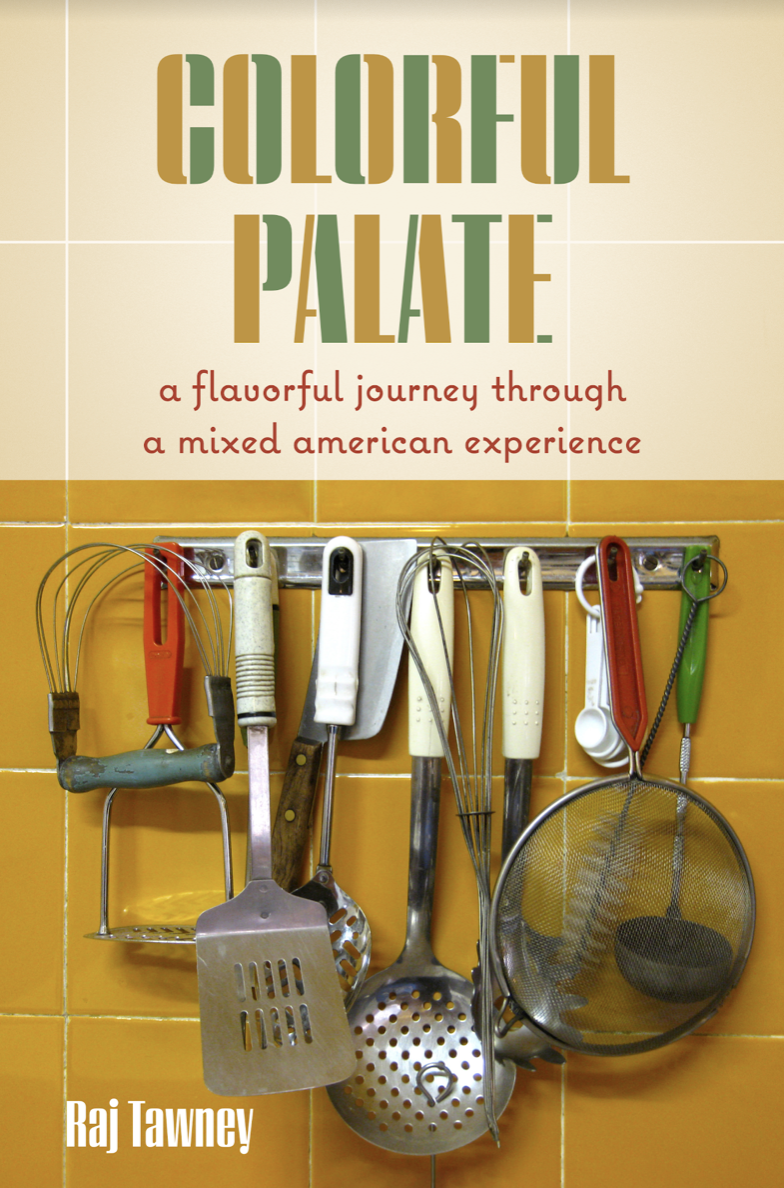
But food always found a way to bridge the divide and create a sense of belonging, whether it was helping out in the family kitchen or eating out at an Indian restaurant.
“I write a lot about food because food is really a gateway to understanding who a person is and where they come from,” said Tawney. “Food was always this kind of connective tissue to helping me understand who I was.”
Tawney didn’t always dream of being a writer. Growing up, he didn’t see himself as a good student and instead pursued music. He didn’t share the poetry and essays he wrote while attending community college until almost a decade later.
As his confidence in his writing grew, he began to get more of his work published in outlets such as The New York Times, Washington Post and The Guardian. The theme that emerged is writing about the intersection of race, identity, food, and culture—about which he seemed to have an endless supply of stories that he naturally shared in a positive way.
He says that his mixed identity was also one of the reasons that his agent told him that he was “unmarketable” after they struggled to find a book deal initially. He was told it needed to be more edgy, more dramatic – similar to what he describes as “trauma porn” where writers will cater to the belief that audiences want to feed off people’s trauma.
“I write about race and identity in a very subtle manner because when you’re talking about very difficult subjects, they don’t always have these large, explosive moments. I think it’s like a million little microaggressions that add up to something in your head. It’s not always very in your face,” said Tawney.
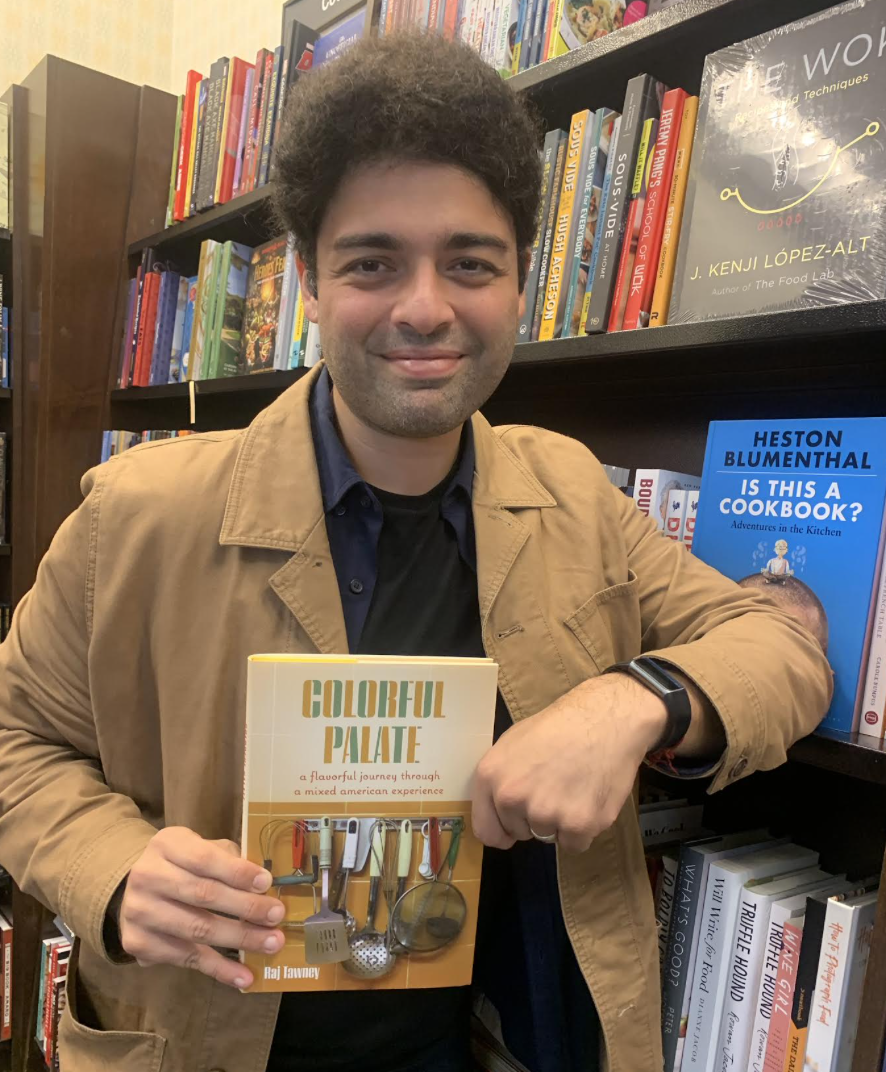
However, he recognized that the publishers wanted more dramatic storylines than what he envisioned “Colorful Palate” to be at the time. The pressure to dramatize his own experiences, which he knew would be relatable to many, felt antithetical, especially after he had had years to reflect on his journey.
“Because I wasn’t willing to kind of embellish my story, they decided that I wasn’t a marketable commodity,” he recalled.
So he took the bold step of leaving his agent in early 2022, kept on writing, and shopped the book around to smaller publishers that he thought could be a better fit. He ended up publishing his debut memoir with Fordham University Press, which he says championed his New York stories with supportive energy.
Earlier this year, the New York Public Library featured “Colorful Palate” as their book of the day. It was a special honor for Tawney who has fond memories of visiting his local library with his mother as a child.
“I consider the book a success because it’s touched so many people,” said Tawney. “I’ve gotten so many emails from people over the years sharing the kind of impact some of the stories I’ve told and how they’ve helped them reconnect with their own family members.”
Dr. Beth Counihan, an English professor at Queensborough Community College, contacted Tawney earlier this year after coming across his book. She believed that the coming-of-age story would appeal to many of her first-year students, especially in a diverse place like Queens.
Since they connected, she’s convinced several other faculty members to also include the book in their syllabus next semester. Tawney will also visit a class in November to discuss the book in person.
“That is the most amazing thing to me. Honestly, it’s better than selling a million copies,” he said. “I can’t wait for people half my age to read that story and hopefully gain something from it.”
His next book, “All Mixed Up” geared towards middle school is set to be released on National Immigrants Day on November 28. It tells the story of a multi-ethnic American boy who forms a friendship with a Pakistani immigrant a year after 9/11. While it’s based on Tawney’s own experiences, the book marks his official foray into fiction and middle-grade writing.
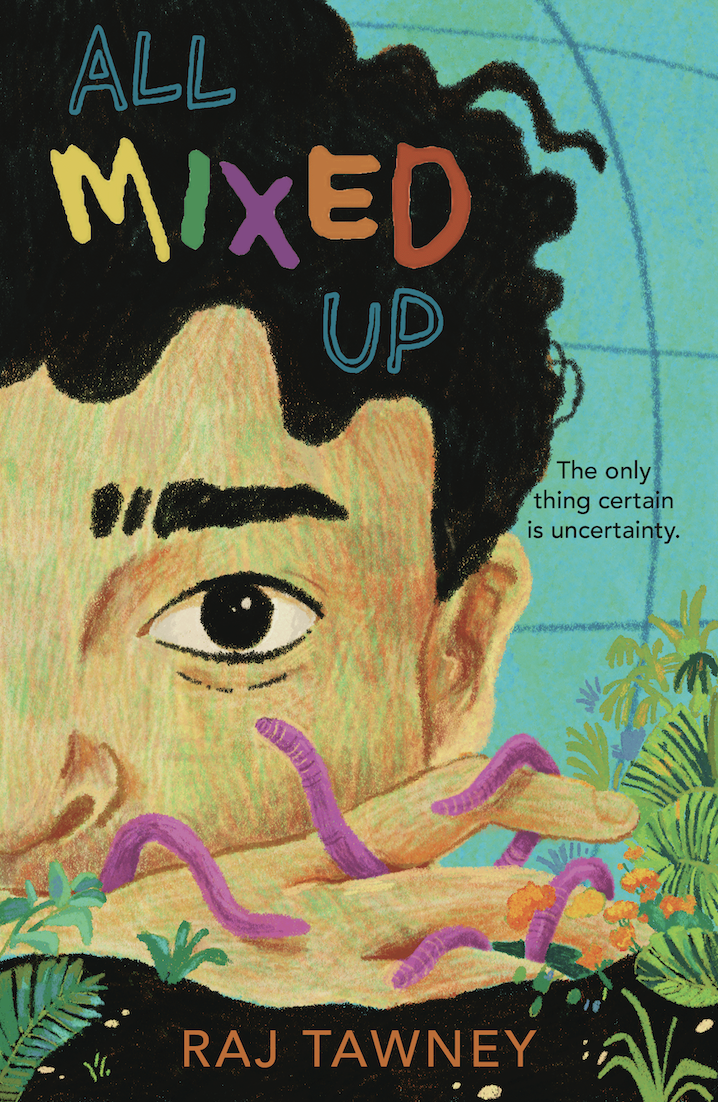
He now lives in South Florida with his wife, their three dogs and two senior parrots. Despite having to leave their home in New York during the pandemic after falling on hard financial times, Tawney has since found his writing community and has been inspired by the diverse immigrant enclaves in the area.
Like many, Tawney is still searching for answers about who he is and where he belongs. But writing and connecting with his inner child in the process has proven to be a cathartic way for him and his readers to come to terms with the complexities of identity.
“We’re all big kids inside,” he quipped.

